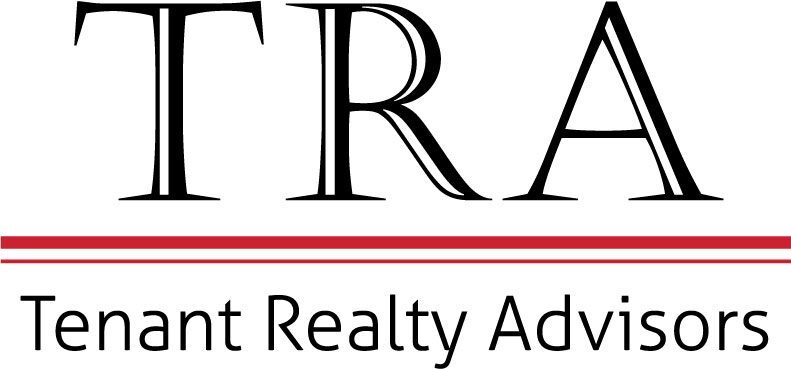
It is critical to understand the requirements of relocation.
Business professionals know the most expensive aspect of running a business is the people, followed closely by space requirements.
These days, more than ever, the emphasis is on high quality space with the ability to attract a workforce that has grown accustomed to working from home. If you think it might be time to relocate your business, it is critical to understand the requirements of relocation, and how real estate advisors, like Tenant Realty Advisors, can help alleviate some of that burden.
Lease transactions can be complex and time-consuming. One of the biggest mistakes businesses make when relocating their business is beginning the process too late. To negotiate the most competitive lease arrangement, it is essential to allow enough time for each step of the process. It is incredibly rare to find turn-key space with all the specific requirements needed to accommodate your business and, more often than not, some build-out will be required. When construction like this is involved, rarely can a relocation be done in a six-month time frame; it typically requires closer to 8-9 months. However, if you are a larger tenant, the process may take as many as eighteen to twenty-four months. Tenant Realty Advisors can guide you through this complex process using our customized Strategic Location Process.
The typical relocation timeline is about 9 months:
- Phase 1: Preliminary Analysis of Client Needs
- Phase 2: Office Market Analysis
- Phase 3: Evaluation of Best Alternatives
- Phase 4: Negotiate & Execute
- Phase 5: Construction & Move-in
Preliminary Analysis
The first step of the Strategic Location Process is to understand the space needs of a client.
Analysis of the Office Market and Financial Comparison
After the initial tour(s), a customized Request for Proposal (RFP) is then developed for each property and should outline the required terms of an anticipated lease agreement. Criteria such as the space required, rental rate and escalations, length of term, commencement date, tenant improvement allowance, expansion options, and renewal terms are just some of the usual components.
Once all proposals are collected, a preliminary financial analysis is performed to quantify and rank visited locations according to their respective economics. Cost components are identified or estimated and then projected over the term of the lease and include: the size of the premises, rent, pro rata share of operating expenses and real estate taxes, rent escalations, tenant improvement costs, moving costs and any other out-of -pocket expenses.
With the ability to equitably compare locations, the business owner can further refine location preferences to at least three options and begin preparing space plans. A space plan will help to develop a visual layout and assess the functionality of the space as well as measure and compare the efficiencies and inefficiencies of the selected locations. Most importantly, construction costs can be estimated to further quantify the economics of the top contenders. Additionally, building deficiencies, such as electrical capacities, telecommunications, high-speed data cabling, and HVAC can and should be identified during this process.
Once the plans are priced and all other costs are identified, a comprehensive financial analysis should be prepared using the projected costs and exact square footages for each space. This provides the opportunity to identify which location best suits the financial needs and preferential desires of the business. By maintaining at least three options, leverage is created, ensuring the negotiated deal will be competitive, but also providing fully vetted alternatives in the event the first choice is eliminated.
Negotiate & Execute Contract
At this point, a written offer or “letter of intent” (LOI) is created for the first choice. The primary purpose of this document is to come to an agreement on the basic points of the lease and provide an outline for the drafting of the lease agreement. Having a professional Real Estate Advisor draft the LOI ensures it contains all major economic and occupancy requirements. Basic issues covered include square footage, lease term, commencement date and rental rates. But a thorough Real Estate Advisor has the knowledge and expertise to negotiate and includes more complex lease points such as rental adjustments and escalations, TI Allowances, expansion and renewal rights, approval processes for construction, landlord fees, sublease and assignment rights, HVAC costs and more.
LOI may be required for an agreement to be reached by both parties (Landlord and Occupier). Once both parties agree to terms, the LOI should be signed and will then be utilized in drafting and finalizing the Lease Document. The Lease document must now be reviewed, and it is highly recommended that legal counsel be retained to review the lease to ensure an equitable legal agreement. Once lease negotiations have concluded, all parties must sign the Lease, and the architect can begin preparing construction documents.
The process of relocating your business is very detail-oriented and a busy professional rarely has time to adequately address all the issues that may arise. Tenant Realty Advisors is here to partner with you through the entire process. If relocating sounds daunting, and you would prefer to renew an existing lease, look out for next month’s newsletter for a detailed breakdown on the renewal process. If you are looking to relocate, reach out today!
Interested in learning more? Call or email us to talk about fine-tuning your real estate strategy!
Subscribe to the newsletter to have industry information and updates sent directly to you.
